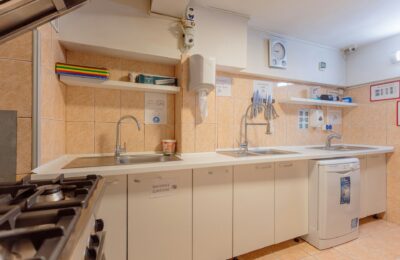LED displays are the backbone of modern digital communication, powering everything from corporate presentations to large-scale advertising campaigns. These sophisticated systems deliver crisp visuals and reliable performance, but like any technology, they can develop problems that compromise their effectiveness.
Recognizing the early warning signs of LED display malfunction can save you from costly downtime and extensive repairs. This comprehensive guide will help you identify six critical indicators that your LED screen requires professional attention, ensuring you can take action before minor issues escalate into major problems.
Flickering and Inconsistent Brightness
Understanding Display Flickering
Flickering represents one of the most common LED display issues that business owners encounter. This problem manifests as rapid variations in brightness or intermittent dark patches across your screen. The flickering may occur sporadically or follow specific patterns, depending on the underlying cause.
Several factors contribute to flickering displays, including power supply instabilities, loose connections, or aging LED modules. Environmental conditions such as temperature fluctuations can also trigger this behavior, particularly in outdoor installations where components face continuous exposure to weather elements.
Brightness Variations Across the Screen
Uneven brightness distribution creates an unprofessional appearance that can undermine your message’s impact. You might notice certain sections appearing dimmer than others, or brightness levels that change gradually across the display surface. These variations often indicate failing LED clusters or control system malfunctions.
Professional screen diagnostics can quickly identify whether the issue stems from hardware degradation or software configuration problems. Addressing brightness inconsistencies promptly prevents further deterioration and maintains the visual quality your audience expects.
Color Distortion and Dead Pixels
Identifying Color Abnormalities
Color accuracy is crucial for maintaining professional standards and brand consistency. When your LED display begins showing colors incorrectly, it signals potential problems with individual LED components or the color processing system. You might observe colors appearing washed out, oversaturated, or completely different from their intended appearance.
Red, green, and blue LED elements work together to create the full spectrum of colors on your display. When one color component fails or weakens, it affects the entire color balance. This imbalance becomes particularly noticeable in skin tones, corporate logos, and other color-critical content.
Dead Pixel Identification and Impact
Dead pixels appear as black spots that remain unchanged regardless of the content being displayed. While a few dead pixels might seem insignificant, they can multiply over time and create distracting visual artifacts. These permanent dark spots become more prominent against light backgrounds and can draw attention away from your intended message.
Clusters of dead pixels, sometimes called “pixel blocks,” indicate more serious hardware failures that require immediate professional intervention. The longer these issues remain unaddressed, the higher the likelihood of additional pixel failures in surrounding areas.
Audio and Visual Synchronization Problems
Diagnosing Sync Issues
When your LED display includes audio components, synchronization becomes critical for effective communication. Audio-visual sync problems create confusing experiences for viewers and can make professional presentations appear amateurish.
These issues typically manifest as delays between audio and visual elements or complete disconnection between sound and image.
Synchronization problems often originate from processing delays, inadequate bandwidth allocation, or incompatible signal formats. Network-based displays may experience sync issues due to data transmission delays or insufficient network capacity to handle high-resolution content streams.
Signal Processing Complications
Modern LED displays rely on sophisticated signal processing to deliver seamless performance. When this processing becomes compromised, you may notice delayed responses to input changes, frozen frames, or content that fails to update properly. These symptoms suggest problems with the display’s control system or communication pathways.
Regular monitoring of signal integrity helps identify emerging problems before they impact your operations. Professional repair services can perform comprehensive signal analysis to pinpoint the exact source of synchronization issues.
Overheating and Thermal Management
Temperature-Related Performance Degradation
LED displays generate significant heat during operation, making thermal management crucial for reliable performance. Overheating can cause immediate performance problems and accelerate component degradation. You might notice reduced brightness, color shifts, or complete system shutdowns when thermal limits are exceeded.
Environmental factors such as direct sunlight, inadequate ventilation, or extreme ambient temperatures can overwhelm your display’s cooling capacity. Internal factors like failing cooling fans blocked air vents, or accumulated dust can also contribute to overheating problems.
Cooling System Failures
Most professional LED displays incorporate active cooling systems to maintain optimal operating temperatures. When these systems fail, component temperatures rise rapidly, triggering protective shutdowns or performance throttling. You may hear unusual fan noises, observe reduced airflow, or notice hot spots on the display housing.
Professional technicians can assess your cooling system’s effectiveness and recommend appropriate solutions. This website provides detailed information about thermal management options and their implementation in various display configurations.
Power Supply and Electrical Issues
Power-Related Display Problems
Electrical problems can cause various LED display issues, from intermittent operation to complete system failures. Power supply instabilities often manifest as flickering, random shutdowns, or sections of the display going dark unexpectedly. These problems can originate from internal power systems or external electrical supply issues.
Voltage fluctuations, power surges, and inadequate electrical capacity can all impact display performance. Professional electrical assessment helps determine whether problems stem from your display’s internal power systems or external electrical infrastructure.
Connection and Wiring Concerns
Loose connections, damaged cables, or corroded terminals can create intermittent problems that are difficult to diagnose without proper equipment. These issues may cause signal dropouts, power interruptions, or data transmission errors that affect display performance.
Regular inspection of electrical connections and cable integrity helps prevent many common problems. However, electrical troubleshooting requires specialized knowledge and safety precautions that make professional service essential for most situations.
Software and Control System Malfunctions
Control System Diagnostics
Modern LED displays depend on sophisticated control systems to manage content, brightness, color calibration, and system monitoring. When these systems malfunction, you may experience erratic behavior, unresponsive controls, or an inability to update content properly.
Software-related problems can be particularly challenging to diagnose without specialized knowledge of display control systems. These issues might appear as hardware failures but require software updates, configuration adjustments, or system resets to resolve.
Content Management Problems
Difficulties in uploading content, scheduling displays, or managing multiple content sources often indicate control system issues. You might notice content that fails to display correctly, scheduling errors, or remote management functions that no longer work properly.
Professional screen diagnostics can distinguish between hardware and software problems, ensuring appropriate solutions are implemented. This diagnostic process often reveals multiple contributing factors that require coordinated resolution.
Protecting Your Investment Through Professional Care
LED displays represent significant investments that require proper maintenance and timely repairs to deliver optimal return on investment. The warning signs discussed in this guide indicate when professional intervention becomes necessary to prevent minor issues from becoming major problems.
Professional repair services offer comprehensive diagnostic capabilities, genuine replacement parts, and warranty protection that ensures long-term reliability. When you notice any of these warning signs, prompt professional assessment can often resolve problems quickly and cost-effectively.
Regular maintenance schedules, combined with attentive monitoring of display performance, help maximize your LED display’s lifespan and maintain professional presentation standards. Don’t wait until problems become severe—early intervention through professional repair services protects your investment and ensures continued reliable operation.






